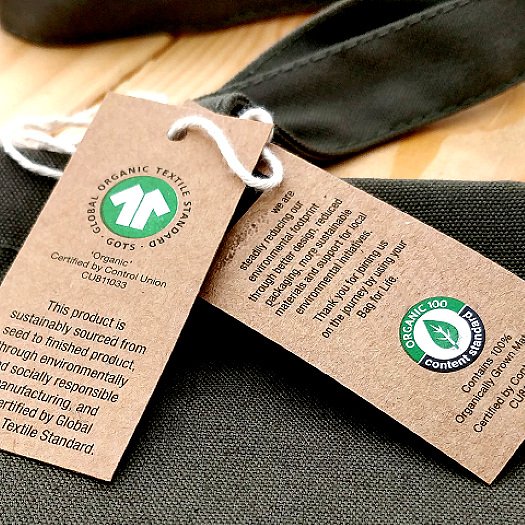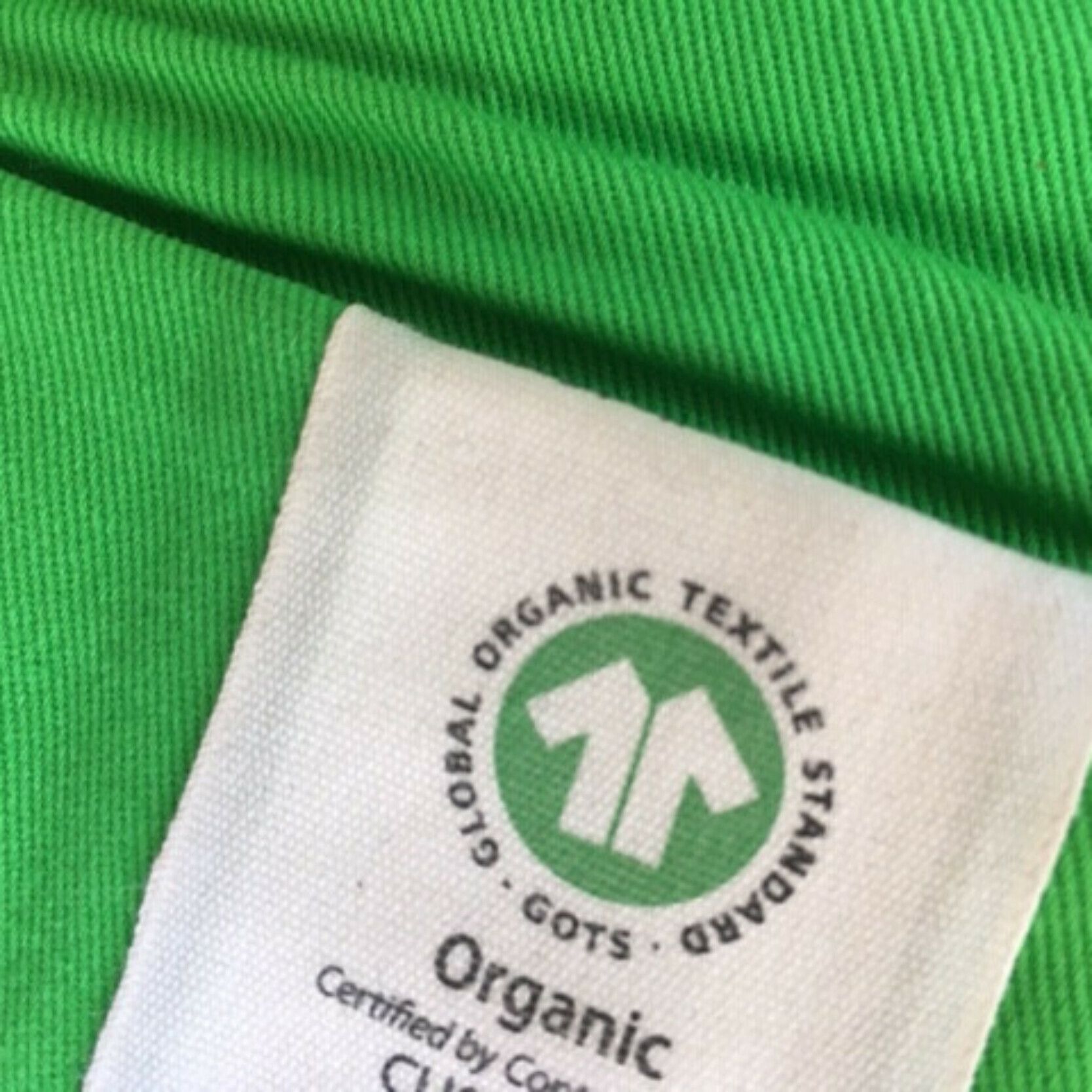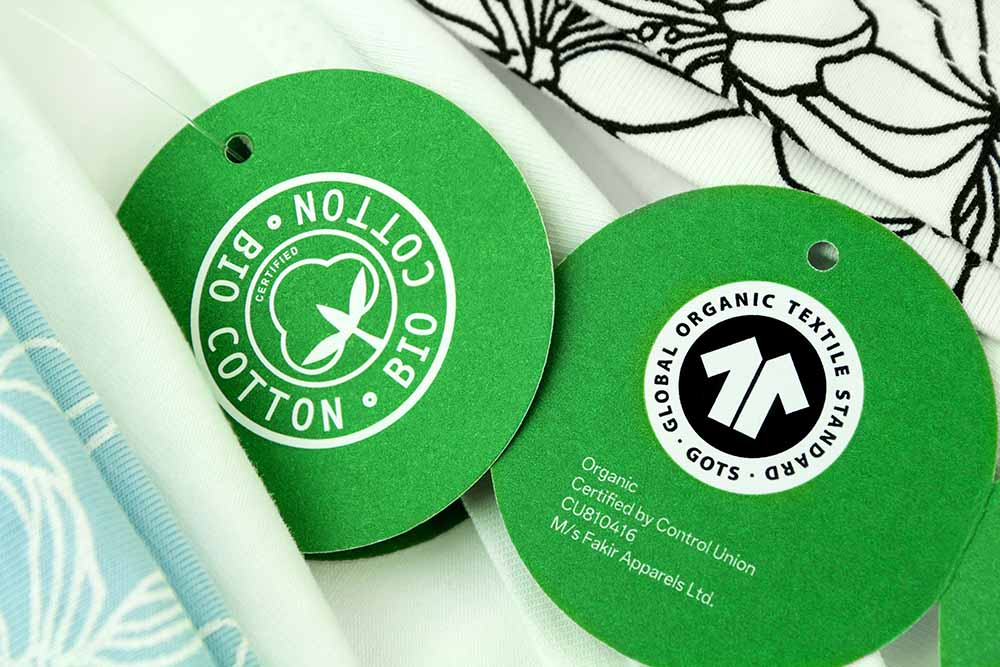Sustainable Fabric Certifications: Understanding the Labels And Standards
Sustainable fabric certifications ensure textiles meet specific environmental and ethical standards. They guide consumers in making eco-friendly choices.
The fashion industry significantly impacts the environment, prompting a rise in sustainable practices. Understanding fabric certifications is crucial for making informed, eco-friendly choices. Labels like GOTS, OEKO-TEX, and Fair Trade signify compliance with stringent standards. These certifications cover aspects like organic farming, safe chemical use, and fair labor practices.
Consumers increasingly demand transparency and sustainability in their purchases. Recognizing these labels helps ensure products align with ethical and environmental values. Brands adopting certified fabrics demonstrate a commitment to sustainability. By choosing certified fabrics, consumers support environmentally responsible and ethically produced textiles.

Credit: www.texintel.com
Introduction To Sustainable Fabric Certifications
The fashion industry is shifting towards sustainability. This shift is driven by consumer demand for eco-friendly products. Sustainable fabric certifications play a crucial role in this movement. They help ensure the authenticity of eco-friendly claims. Understanding these labels and standards is essential for making informed choices.
The Rise Of Eco-conscious Fashion
Eco-conscious fashion has seen a significant rise. Consumers want to reduce their carbon footprint. They seek out brands that prioritize sustainability. This trend has led to an increase in sustainable fabric certifications. These certifications provide assurance of environmentally-friendly practices.
The Importance Of Certifications
Certifications are vital in verifying sustainable practices. They ensure that fabrics meet specific environmental standards. These standards cover various aspects:
- Use of organic materials
- Reduction of water usage
- Minimization of chemical use
- Fair labor practices
Several organizations provide these certifications. Each has its own criteria and focus areas. Here are some well-known sustainable fabric certifications:
| Certification | Focus Area |
|---|---|
| GOTS (Global Organic Textile Standard) | Organic fibers, processing, and manufacturing |
| OEKO-TEX Standard 100 | Testing for harmful substances |
| Fair Trade Certified | Fair wages and safe working conditions |
| Bluesign | Resource productivity and environmental impact |
Understanding these certifications helps consumers make better choices. It promotes transparency in the fashion industry. This leads to a more sustainable future for all.

Credit: global-standard.org
Types Of Sustainable Fabrics
Understanding sustainable fabrics is crucial for eco-conscious consumers. Different types of fabrics have varied environmental impacts. By knowing the types, you can make better choices for the planet.
Natural Vs Synthetic
Natural fabrics come from plants and animals. Common natural fabrics include cotton, wool, and silk. They are biodegradable and often have a smaller carbon footprint.
- Cotton: Grown from cotton plants, it is soft and breathable.
- Wool: Comes from sheep, it is warm and durable.
- Silk: Produced by silkworms, it is smooth and shiny.
Synthetic fabrics are man-made. They often come from petroleum-based products. These include polyester, nylon, and acrylic. They are not biodegradable and can harm the environment.
- Polyester: Made from plastic, it is strong and wrinkle-resistant.
- Nylon: Also plastic-based, it is stretchy and quick-drying.
- Acrylic: Resembles wool, but is artificial and less sustainable.
Eco-friendly Innovations
New eco-friendly fabrics are emerging. These innovations aim to reduce environmental impact. Some examples include organic cotton, bamboo, and recycled polyester.
| Fabric | Description | Benefits |
|---|---|---|
| Organic Cotton | Grown without pesticides | Healthier for farmers and soil |
| Bamboo | Fast-growing plant | Biodegradable and renewable |
| Recycled Polyester | Made from recycled plastic bottles | Reduces waste and energy use |
By choosing these innovative fabrics, you help protect the planet. Each choice makes a difference.
Certification Basics
Sustainable fabric certifications help consumers make eco-friendly choices. These certifications ensure the materials are safe and responsibly sourced. Let’s explore the basics of these certifications.
What Is A Sustainable Fabric Certification?
A sustainable fabric certification verifies that a material meets specific environmental standards. These standards often cover various aspects such as:
- Organic farming practices
- Fair labor conditions
- Low environmental impact
- Animal welfare
Certifications are provided by independent organizations. They evaluate fabrics based on strict criteria. This gives confidence to consumers about their eco-friendly choices.
The Role Of Third-party Organizations
Third-party organizations play a crucial role in sustainable fabric certifications. They conduct rigorous testing and audits. This ensures that the fabric manufacturers adhere to the standards.
Some well-known third-party certification bodies include:
| Certification Body | Focus Area |
|---|---|
| Global Organic Textile Standard (GOTS) | Organic fibers |
| OEKO-TEX | Harmful substances |
| Fair Trade Certified | Fair labor practices |
| Bluesign | Environmental impact |
These organizations ensure transparency and trust. They help consumers make informed decisions about sustainable fabrics.
Global Organic Textile Standard (gots)
The Global Organic Textile Standard (GOTS) is a worldwide standard. It ensures textiles are organic and produced sustainably. GOTS covers the entire textile supply chain. This includes processing, manufacturing, packaging, labeling, trading, and distribution. GOTS aims to define globally recognized requirements. It provides credible assurance to the end consumer.
Criteria For Gots Certification
GOTS certification has strict criteria. These criteria cover environmental and social aspects. For a textile to be GOTS certified, it must meet the following:
- Organic Fibers: At least 70% of fibers must be organic.
- Restricted Chemicals: Prohibits toxic chemicals and dyes.
- Environmental Management: Must have a clear waste management plan.
- Social Criteria: Must comply with the International Labour Organization (ILO) norms.
Below is a table summarizing the main criteria:
| Criteria | Details |
|---|---|
| Organic Fibers | Minimum 70% organic fibers |
| Restricted Chemicals | No toxic chemicals or dyes |
| Environmental Management | Clear waste management plan |
| Social Criteria | Compliance with ILO norms |
Impact Of Gots On The Textile Industry
GOTS has a significant impact on the textile industry. It promotes sustainable practices across the supply chain. Many brands now seek GOTS certification. This ensures their products meet high standards. It encourages the use of organic materials. This reduces the environmental footprint.
GOTS certification also boosts consumer confidence. Consumers trust GOTS labels. They believe in its strict criteria. This trust increases sales for certified brands. It also pressures non-certified brands to improve.
The following are the benefits of GOTS for the industry:
- Promotes sustainable practices.
- Encourages use of organic materials.
- Boosts consumer confidence.
- Increases sales for certified brands.
- Pressures non-certified brands to improve.
GOTS continues to shape the textile industry. It sets a global standard for organic and sustainable textiles. This benefits both the industry and consumers.
Oeko-tex Standard
The OEKO-TEX Standard is a globally recognized certification. It ensures textiles are free from harmful substances. This certification promotes safe and sustainable fabric production. Many consumers trust OEKO-TEX for its strict testing protocols.
Features Of Oeko-tex
OEKO-TEX Standard offers several features to ensure fabric safety:
- Comprehensive Testing: The certification involves rigorous testing for harmful chemicals.
- Global Recognition: OEKO-TEX is recognized worldwide for its credibility.
- Transparency: The certification process is transparent, offering detailed reports.
- Environmental Impact: It promotes eco-friendly production methods.
- Consumer Safety: Ensures that fabrics are safe for human use.
How Oeko-tex Differs From Other Certifications
OEKO-TEX has unique features compared to other fabric certifications:
| Feature | OEKO-TEX | Other Certifications |
|---|---|---|
| Testing Scope | Extensive chemical testing | Limited chemical testing |
| Global Recognition | Worldwide | Region-specific |
| Transparency | High | Varies |
| Consumer Focus | High | Moderate |
OEKO-TEX stands out for its thorough approach. It ensures fabrics are safe and eco-friendly. This makes it a preferred choice for many consumers and manufacturers.
Fair Trade Certification
Fair Trade Certification ensures that textile workers receive fair wages and work in safe conditions. This label is crucial for sustainable fabric production. Understanding this certification helps consumers make ethical choices.
Principles Of Fair Trade Textiles
Fair Trade textiles follow key principles to protect workers:
- Fair wages for all workers
- Safe and healthy working conditions
- Environmental sustainability practices
- No child labor or forced labor
- Community development support
These principles ensure textiles are produced ethically and sustainably.
Benefits For Workers And Consumers
Fair Trade certification offers many benefits for both workers and consumers.
For workers:
- Higher and stable incomes
- Improved working conditions
- Access to healthcare and education
- Empowerment and better quality of life
For consumers:
- Ethical shopping choices
- High-quality, sustainable products
- Supporting fair labor practices
- Contributing to social and environmental change
Fair Trade certification bridges the gap between ethical production and conscious consumption.
Bluesign System
The Bluesign System is a holistic approach to sustainable textile production. It ensures that every step of the supply chain meets high environmental standards. The system focuses on minimizing the negative impact on the environment, workers, and consumers. Understanding the Bluesign System helps in making informed choices about sustainable fabrics.
Focus On Production Processes
The Bluesign System places great importance on production processes. It covers the entire supply chain, from raw materials to finished products.
- Raw Material Selection: Ensures safe and sustainable sourcing.
- Chemical Management: Limits the use of harmful chemicals.
- Energy Efficiency: Encourages energy-saving practices.
- Water Conservation: Promotes water-saving techniques.
- Waste Management: Reduces waste and promotes recycling.
Advantages For The Environment
Using the Bluesign System offers numerous environmental benefits.
| Benefit | Description |
|---|---|
| Reduced Pollution | Minimizes harmful emissions and effluents. |
| Conservation of Resources | Saves water and energy during production. |
| Improved Safety | Ensures the safety of workers and consumers. |
| Waste Reduction | Encourages recycling and reduces landfill waste. |
These advantages help protect the environment and promote sustainability.
Cradle To Cradle (c2c) Certified
The Cradle to Cradle (C2C) certification is a globally recognized standard. It promotes safe, circular, and responsible products. C2C focuses on five key areas: material health, material reuse, renewable energy, water stewardship, and social fairness.
Circular Economy Concept In Textiles
The circular economy aims to eliminate waste and keep products in use. In textiles, this means designing clothes that can be reused or recycled. This approach reduces the need for new raw materials.
Key principles of circular economy include:
- Designing for longevity
- Using recyclable materials
- Minimizing waste during production
- Encouraging repair and reuse
Assessing Product Lifecycle
Assessing a product’s lifecycle is crucial for C2C certification. This involves examining each stage from raw material extraction to end-of-life.
Stages of product lifecycle assessment include:
- Material sourcing
- Production
- Distribution
- Use
- End-of-life
Each stage must meet strict environmental and social standards. This ensures the product is safe for people and the planet.
Choosing The Right Certification
Selecting the right sustainable fabric certification is crucial. It helps you make eco-friendly choices. Many certifications exist, and understanding them can be challenging. This guide simplifies the process.
Comparing Certification Standards
Different certifications have unique standards. Below is a comparison of popular ones:
| Certification | Focus | Criteria |
|---|---|---|
| GOTS | Organic textiles | Environmental and social criteria |
| OEKO-TEX | Harmful substances | Human-ecological safety |
| Fair Trade | Fair wages | Social and economic criteria |
Interpreting Labels For Conscious Purchasing
Reading labels helps you make informed choices. Here are common labels and their meanings:
- GOTS: Ensures organic status and social responsibility.
- OEKO-TEX: Guarantees no harmful chemicals.
- Fair Trade: Assures fair wages and safe working conditions.
Look for these labels on products. They guide you in buying sustainable fabrics.
The Future Of Fabric Certifications
The future of fabric certifications is bright. It promises more transparency. Consumers want to know the origins of their fabrics. This demand pushes for better standards. The rise of eco-friendly materials is a driving force. Let’s explore the exciting future of fabric certifications.
Innovations In Sustainability
New technologies are shaping fabric certifications. Innovations like blockchain ensure transparency. Blockchain tracks the journey of fabric from farm to store. This technology makes certifications more reliable.
Another innovation is the use of AI. AI helps in verifying the authenticity of certifications. It can quickly scan and validate data. This reduces the chances of fake certifications. AI also helps in monitoring the environmental impact of fabric production.
Biodegradable materials are on the rise. These materials break down naturally. They reduce waste and are better for the planet. Certifications for biodegradable fabrics will become more common.
The Evolving Landscape Of Textile Certifications
Textile certifications are evolving. New standards are being developed. These standards focus on the entire lifecycle of fabrics. From raw material sourcing to end-of-life disposal.
Certifications are now including social aspects. Fair trade and worker rights are becoming part of fabric certifications. This ensures that fabrics are not only eco-friendly but also ethically produced.
There is a push for global standards. Different countries have different certifications. A unified global standard will make things simpler. It will also ensure consistency across the industry.
| Certification | Focus Area | Future Trends |
|---|---|---|
| OEKO-TEX | Harmful substances | Incorporating blockchain |
| GOTS | Organic textiles | AI verification |
| Fair Trade | Worker rights | Global standards |
New materials are being developed. Lab-grown fabrics and recycled materials are becoming popular. These materials will have their own certifications. This will ensure they meet sustainability standards.
Consumers are becoming more aware. They demand transparency and accountability. This will drive the future of fabric certifications. Brands will need to adapt to meet these demands.
Consumer’s Guide To Sustainable Fashion
Sustainable fashion is important today. It helps protect the planet. Many people want to buy eco-friendly clothes. But, it is hard to know which brands are real. This guide helps you understand fabric certifications.
How To Identify Genuine Certifications
Many labels claim to be sustainable. But not all are true. Here are ways to check:
- Check the logo: Look for well-known logos.
- Research the certification body: Read about the body that gives the certification.
- Visit the official website: Check the certification on their site.
Some trusted certifications are:
| Certification | Description |
|---|---|
| GOTS | Global Organic Textile Standard |
| OEKO-TEX | Tested for harmful substances |
| Fair Trade | Fair wages and safe conditions |
Promoting Transparency In The Fashion Industry
Transparency is key in fashion. It builds trust. Here are ways companies can be transparent:
- Share production details: Explain how and where items are made.
- List materials: Show what fabrics and dyes are used.
- Show certifications: Display all genuine certifications.
Consumers can also ask questions. Ask about the supply chain. Demand proof of certifications. This encourages brands to be honest.

Credit: www.hercircle.in
Conclusion
Understanding sustainable fabric certifications empowers consumers to make eco-friendly choices. These labels ensure transparency and ethical practices. By choosing certified fabrics, we support a healthier planet. Stay informed and prioritize sustainability in your purchases. Together, we can drive positive change in the fashion industry and beyond.
